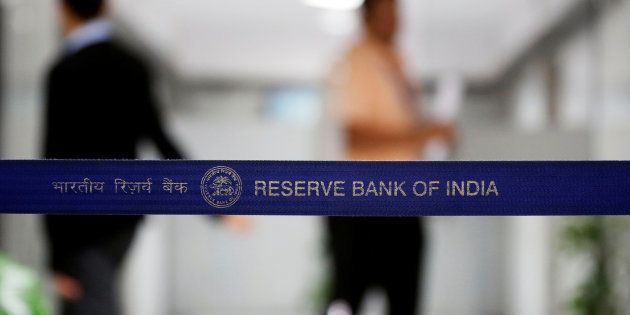
A month after the Reserve Bank of India (RBI) was accorded new powers to push stressed companies into bankruptcy, the central bank has identified 12 of the biggest loan defaulters for bankruptcy proceedings under India's new insolvency laws.
The names of the defaulters or the individual banks are undisclosed but together they represent 25 per cent of the gross bad loans at Indian banks. All 12 companies owe over Rs 5,000 crore each and owe a combined amount of over Rs 175,000 crores. According to an official statement, about 60 percent or more of the loans owed by these companies have already been classified as non-performing by banks as of March 31.
What happens next?
These 12 companies will be referred to the National Company Law Tribunal (NCLT), the main body responsible for adjudicating insolvency proceedings of India's new bankruptcy laws. Once in bankruptcy proceedings, the NCLT could either order a sale of the companies' assets or resolve the bad debt with an aim to revive the company within 180 days.
RBI is expected to come out with a formal framework of debt resolution of these bad debts soon that will give more clarity over which lender or lenders will lead the company's bankruptcy proceedings. Lenders will likely be allowed to take "haircuts" – a practice of selling non-performing loans to third parties at a discount. Several Indian and foreign asset resconstruction companies and hedge funds have begun showing an interest in lapping up the distressed debt of Indian companies, the New York Times reported.
Elsewhere, in countries that have bankruptcy laws such as the US, the lenders take control of the assets of the company during bankruptcy proceedings that results in the equity of the company's owners and promoters getting wiped out. The bankruptcy courts can also appoint a turnaround expert whose sole aim is to help revive the company on behalf of the banks and help them recover the soured debt.
RBI has also directed banks to resolve the bad loans for other non-performing accounts that don't meet its existing bankruptcy criteria. If the remaining accounts fail to find a debt resolution, then those companies will also be pushed into bankruptcy.
Earlier this week, an internal committee at RBI had discussed the top 500 stressed accounts that could be referred to debt resolution.
Litmus test
The debt resolution of these accounts will prove to be a litmus test for India's new bankruptcy laws, the Insolvency and Bankruptcy Code, 2016, potentially unclogging over $150 billion of bad loans in the Indian banking system that have stymied new lending and have been a drag on the Indian economy. Thus far, 81 cases of bad loans have been referred to NCLT, Mint reported.
State-run banks hold the vast majority of the bad loans with sectors including infrastructure, power, iron and steel making up the biggest chunk of non-performing assets.
Last month, the government amended India's banking laws to give RBI more powers to deal with bad loans, following limited success of various stressed asset schemes previously mooted by RBI. While these regulatory moves are in the right direction, Indian banks will ultimately need capital infusion to deal with these assets, say credit ratings agencies.
Banks have been thus far reluctant to sell or resolve bad debt through RBI's debt resolution schemes because of fear of strict action from India's law enforcement agencies and negative public image associated with waiving part of the debt of wealthy promoters or large companies. The Central Bureau of Investigation (CBI) and the Mumbai Police's Economic Offences Wing, for instance, are currently aggressively pursuing prosecution and extradition of liquor baron Vijay Mallya whose now defunct Kingfisher Airlines has defaulted on over Rs 900 crores of loans owed to a consortium of banks. Earlier this year, CBI also arrested eight senior executives and former chairman of IDBI Bank Yogesh Aggarwal, alleging the bank executives had colluded with Mallya. IDBI is one of the banks that lent money to Kingfisher.
Sapan Gupta, a lawyer at Shardul Amarchand Mangaldas has called the RBI's latest move "a positive and bold step" and a signal that the government and regulators are keen to tackle the bad debt crisis in the current financial year.
With Reuters inputs.